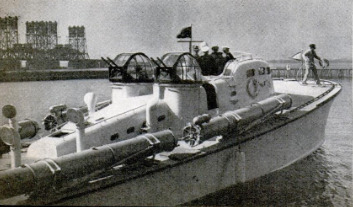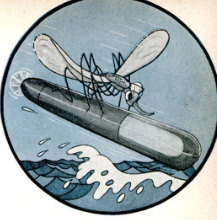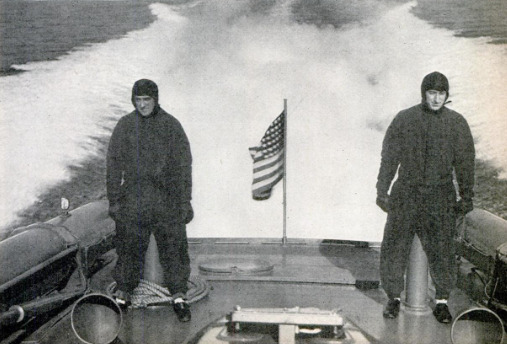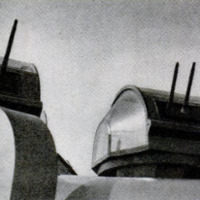Little boats with mighty stings
Item
-
Title (Dublin Core)
-
Little boats with mighty stings
-
Article Title and/or Image Caption (Dublin Core)
-
Title: Little boats with mighty stings
-
extracted text (Extract Text)
-
“DO IT YESTERDAY" is the motto of
D the U.S. Navy's newest unit, Motor
Torpedo Boat Squadron 1. The boys of the
“sandwich navy” picked that because they
travel so fast that if they didn’t do it
yesterday they may not get a chance to
do it at all.
“M.T.B. Ron 1,” as it is known officially,
is composed of seventy-foot, 60-mile-an-
hour wooden speedboats, each armed with
four torpedoes in deck tubes and two twin
mounts of heavy-caliber machine guns. The
Navy ordered 23 of these mosquito boats
a year ago for experiments and gave the
job of organizing them and studying their
potentialities to Lieut. Earl S. Caldwell,
Annapolis, '26. Now they are being turned
out at the rate of one a week by a specially
constructed plant of the Electric Boat Com-
pany at Bayonne, N. J, and more have
been ordered.
Boats of the mosquito fleet, designated
by the letters PT (Patrol Torpedo) and a
number, are modeled after the latest of the
British M.T.B.’s designed by Hubert Scott-
Paine, the “Gar Wood of England.” This
design was chosen by the Navy after com-
parative tests with American-designed and
built boats of the same type.
Each is powered with three supercharged
Packard 1,350-horsepower, 12-cylinder en-
gines designed for marine work. An inkling
of the boats’ power is given by their “idling”
speed. With all engines in gear and turning
over at their lowest speed, the boats travel
at better than ten knots, a respectable top
speed for any ordinary motor cruiser.
The power plants, with auxiliary equip-
ment, fill the after end of the hull. Amid-
ships is a small cabin for
navigation and radio work,
with tanks beneath and
beside it, officers’ cabins
crammed between the
cabin sides and the hull,
and machine-gun turrets
in its after end. Forward
of the cabin is the bridge,
with an outside control
station just aft and above
it, from which the boat
would be commanded in
action. Under the rounded
foredeck are a miniature
galley and quarters for
the eight crew members.
Each boat carries one or
two officers, usually en-
signs or lieutenants. Be-
cause of the cramped
quarters and hard work,
crew members are chosen
for their stamina and re-
sourcefulness. Operating
these supercharged surf-
boards at sea involves so
much uncertain motion
that only sandwiches, and
beverages in heavy cups,
can be served when under
way. Hence the term
“sandwich navy,” coined by the enlisted men.
Officers and men alike of the mosquito fleet are
confident that the Navy soon will have hundreds
of these speedy stingers. They point out that four
of them, converging on an enemy ship intent on
raiding the coastline, could lay down a barrage of
sixteen torpedoes, and it would be a major miracle
if at least one of them didn't find the target.
Equipped as they are with smoke-screening
apparatus (some of them also will carry depth
charges for combating submarine activity) they
could be used as a scouting force or screen for
heavier ships, or as an effective coastal patrol.
As one officer put it recently, they are “weapons
of opportunity,” which might prove invaluable
under certain conditions, and the Navy plans to
have enough of them to take advantage of what-
ever “opportunities” might occur.
-
Contributor (Dublin Core)
-
Davis M. Stearns (article writer)
-
Language (Dublin Core)
-
Eng
-
Date Issued (Dublin Core)
-
1941-02
-
pages (Bibliographic Ontology)
-
88-89
-
Rights (Dublin Core)
-
Public domain
-
Archived by (Dublin Core)
-
Sami Akbiyik
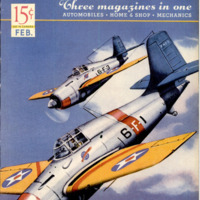 Popular Science Monthly, v. 138, n. 2, 1941
Popular Science Monthly, v. 138, n. 2, 1941


